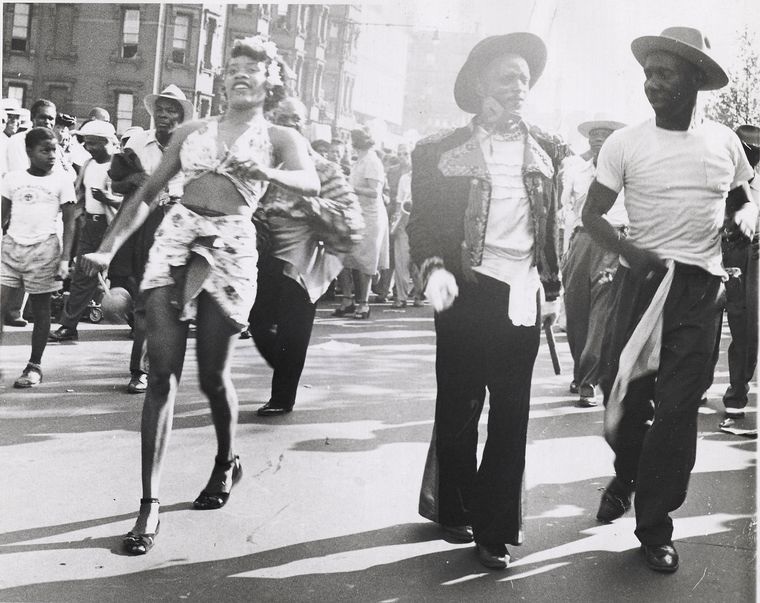 Many slaves brought the tradition of African outdoor ceremonies to the Caribbean. However, once enslaved, they were prohibited from holding public celebrations despite their slaveholders’ engagement in street parades like Mardi Gras. Once freed, ex-slaves began their own street celebrations, combining elements of African and European culture. Costumes for these celebrations became larger and more spectacular as the parades became louder and wilder, infused with musical rhythms. As Caribbean people migrated to North America, they brought with them this new type of carnival.
Many slaves brought the tradition of African outdoor ceremonies to the Caribbean. However, once enslaved, they were prohibited from holding public celebrations despite their slaveholders’ engagement in street parades like Mardi Gras. Once freed, ex-slaves began their own street celebrations, combining elements of African and European culture. Costumes for these celebrations became larger and more spectacular as the parades became louder and wilder, infused with musical rhythms. As Caribbean people migrated to North America, they brought with them this new type of carnival.
Jessie Waddell and some of her West Indian friends started the Carnival in Harlem in the 1920s by staging costume parties in large enclosed places like the Savoy, Renaissance and Audubon Ballrooms due to the cold wintry weather of February.This is the usual time for the pre-Lenten celebrations of the Trinidad and Tobago Carnival and other related celebrations around the world. However, because of the very nature of Carnival, and the need to parade in costume to music, indoor confinement did not work well.
The earliest known Carnival street parade was held on September 1, 1947. The Trinidad Carnival Pageant Committee was the founding force behind the parade, which was held in Harlem. The parade route was along Seventh Avenue, starting at 110th St.
The first Carnival Queen was Dorothy Godfrey. The Committee raised money to finance the parade. They sold advertisement space and boosters, that were printed in a Souvenir Journal for West Indies Day, a booklet which is a memento of that first parade. Jessie Waddell Compton is presented in the journal as the person “whose inspiration and enterprise” was owed to the formation of this committee. The committee consisted of Waddell Compton-Chairman; Ivan H. Daniel-Vice Chairman; Conrad Matthews-Treasurer; Roy Huggins-Secretary; and Robert J. Welsh-Assistant Secretary. Each member of the committee contributed in helping to organize the parade. The after-parade party, which the Trinidad Carnival Pageant Committee held at the Golden Gate Ballroom (located at 142nd St. and Lenox Ave), was arranged by James M. Green, another figure who helped make the first Carnival Parade in Harlem successful.
The permit for the Harlem parade was revoked in 1964. Five years later, a committee headed by Carlos Lezama, which eventually became the West Indian-American Day Carnival Association, obtained approval for the parade to be established on Eastern Parkway in Brooklyn, where it remains today.
Each year, Caribbean Beat reports that it earns New York over US $200 million worth of revenue, with most of it being generated for the Brooklyn community.
Via source. Photo credit: A 1948 view of the West Indian Day Parade when it was located in Harlem.
Editor’s Note: We searched and searched for a photo of Mrs. Jessie Waddell (Compton), if you have one please share with us.
Become a Harlem Insider!
By submitting this form, you are consenting to receive marketing emails from: . You can revoke your consent to receive emails at any time by using the SafeUnsubscribe® link, found at the bottom of every email. Emails are serviced by Constant Contact








